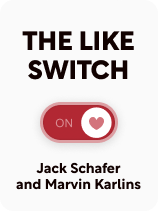

This article is an excerpt from the Shortform book guide to "The Like Switch" by Jack Schafer and Marvin Karlins. Shortform has the world's best summaries and analyses of books you should be reading.
Like this article? Sign up for a free trial here.
What are friendly nonverbal communication cues? How should you read these gestures?
The Like Switch by Jack Schafer and Marvin Karlins outlines several nonverbal communication cues that you should take as friendly. These gestures can help you effectively communicate your openness to friendship.
Below we’ll discuss the authors’ advice for using nonverbal cues to spot potential friends.
Positive Nonverbal Cues
There are many nonverbal communication cues we show others we’re open to a positive connection. According to Schafer and Karlins, the following behaviors communicate friendliness, confidence, and trust. If you see people displaying these cues, they’re willing to be your friend. You can also exhibit these behaviors yourself to invite new connections.
1. Smiling
This is one of the most powerful ways to signal affection and openness. Furthermore, smiling people are seen as more attractive and more confident.
(Shortform note: The authors say that smiling generally shows others that you’re friendly, confident, and open to connection. However, smiles are arguably more nuanced than this: There are many different-looking types that we use for different purposes. For example, a smile intended to show genuine enjoyment“lights up” your face, suddenly engaging muscles around your lips, cheeks, and eyes at the same time. In contrast, a forced smile—the so-called “customer service smile”—lifts the corners of your mouth especially high and exposes an unnaturally large amount of teeth. This happens because your facial muscles have to work harder to fake a smile. Fake smiles also won’t engage the muscles around your eyes.)
2. Eyebrow Movement
Another cue that signals friendliness when greeting others is lifting your eyebrows and returning them to their resting position in a single, rapid movement. If someone doesn’t flash their eyebrows in greeting, we subconsciously perceive that person as someone to avoid.
(Shortform note: Psychologists, sociologists, and ethologists have studied the “eyebrow flash” for many years as a nonverbal signal that’s ubiquitous across the world. Most famously, one 1970s ethologist identified this nonverbal cue in more than a dozen cultures, including Japan, Samoa, Papua, France, South America, and Africa. The authors primarily discuss its use as a friendly form of greeting, but raising your eyebrows can also signal flirtation, agreement, surprise, disbelief, fear, and disapproval.)
3. Tilting Your Head to the Side
This cue shows that you aren’t a threat. When you tilt your head and expose your neck, you leave your carotid artery vulnerable, displaying trust toward the other person.
(Shortform note: Tilting your head can be a great way to show potential friends that you’re caring and trustworthy. However, it may not always be advantageous in workplace communication, especially for women. Since tilting your head shows vulnerability, others may see it as a sign of submission, furthering stereotypes that women are more passive, collaborative, and nurturing. These stereotypes can make it difficult for women to be taken seriously in a work environment. When you need to appear powerful—for instance, when asking for a raise, giving a presentation, or advocating for your idea in a meeting—keep your head straight, as this position signals authority and confidence.)
4. Eye Contact
You can use eye contact to nonverbally get people’s attention. If you don’t know someone very well but want to show interest, lock eyes with them for about a second, look away, then look back. You can also use eye contact to show that you’re actively listening.
(Shortform note: Eye contact can be a great way to connect with people, particularly in Western cultures where it’s a sign of respect, honesty, and care. Eye contact is not universally accepted as positive, however. For example, in Japanese and Navajo cultures, making eye contact with strangers, elders, and members of the opposite sex signals disrespect. Additionally, neurodivergent people, especially individuals on the autism spectrum, often struggle to make eye contact because it causes feelings of discomfort and anxiety. The next time someone struggles to look you in the eye, consider where their hesitation might be coming from—it may not be a place of disrespect.)
5. Leaning Forward
This nonverbal communication cue conveys interest in the other person. Generally, people with good rapport orient their torsos toward each other during a conversation.
(Shortform note: The authors present leaning toward someone as indicating general interest in another person, but it can also be a sign of attraction, specifically. Leaning in closes the distance between you and the other person, indicating that you’re only thinking about each other. This behavior can result from two desires that signal attraction: You lean in because you want the other person to pay close attention to you or because you want to be more intimate with them.)
6. Matching Body Language
When you have a strong connection with someone, you naturally match their body language during your interactions. For example, if you lean against a wall or take a sip of your drink, a friend will repeat those actions unconsciously. If a person’s body language contrasts with yours, there’s some dissonance in the interaction.
(Shortform note: Have you ever wondered why you feel the urge to yawn when you see someone else do it? This phenomenon stems from the same behavioral processes that cause you to mirror your friends’ body language during conversations. The sight of someone yawning triggers the mirror neurons in your brain that activate when you imitate someone else’s behavior, so witnessing a yawn tells your brain that you should do it too. As social animals, humans naturally copy the behavior of to fit in.)
7. Touching
Different kinds of casual touches, like a hug or a light touch on the arm, can be a great way to communicate affection and support in friendships. However, everyone’s personal boundaries are different, so be aware of negative reactions to touching that suggest discomfort or disapproval, like pulling away or stepping back.
(Shortform note: As Schafer and Karlins state, touch is an important nonverbal communication cue between human beings. Most people are accustomed to a base level of platonic touch in their daily lives, like hugs and handshakes. Positive forms of touch like hugging, holding hands, and linking arms with loved ones calm stress responses, strengthen the immune system, regulate digestion, and improve the quality of sleep. Thus, lack of physical contact with other people can be detrimental to your mental and physical health. This led to public health concern over a widespread sense of loneliness and isolation during the Covid-19 pandemic lockdowns, as people who lived alone were starved of touch.)

———End of Preview———
Like what you just read? Read the rest of the world's best book summary and analysis of Jack Schafer and Marvin Karlins's "The Like Switch" at Shortform.
Here's what you'll find in our full The Like Switch summary:
- How to cultivate the qualities you need to attract and connect with new friends
- How to have meaningful, smooth conversations with friends
- How you can productively manage conflict in relationships






